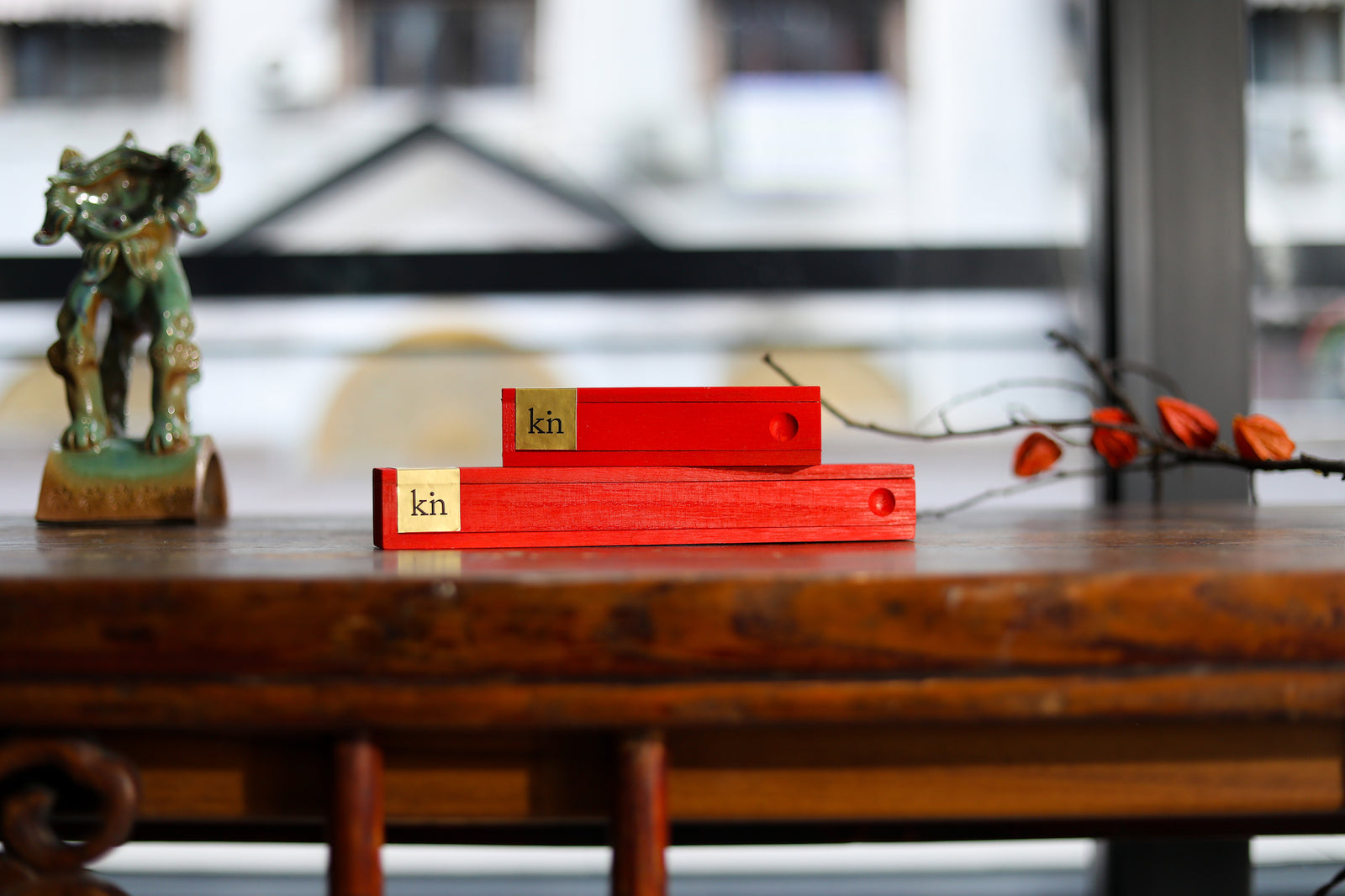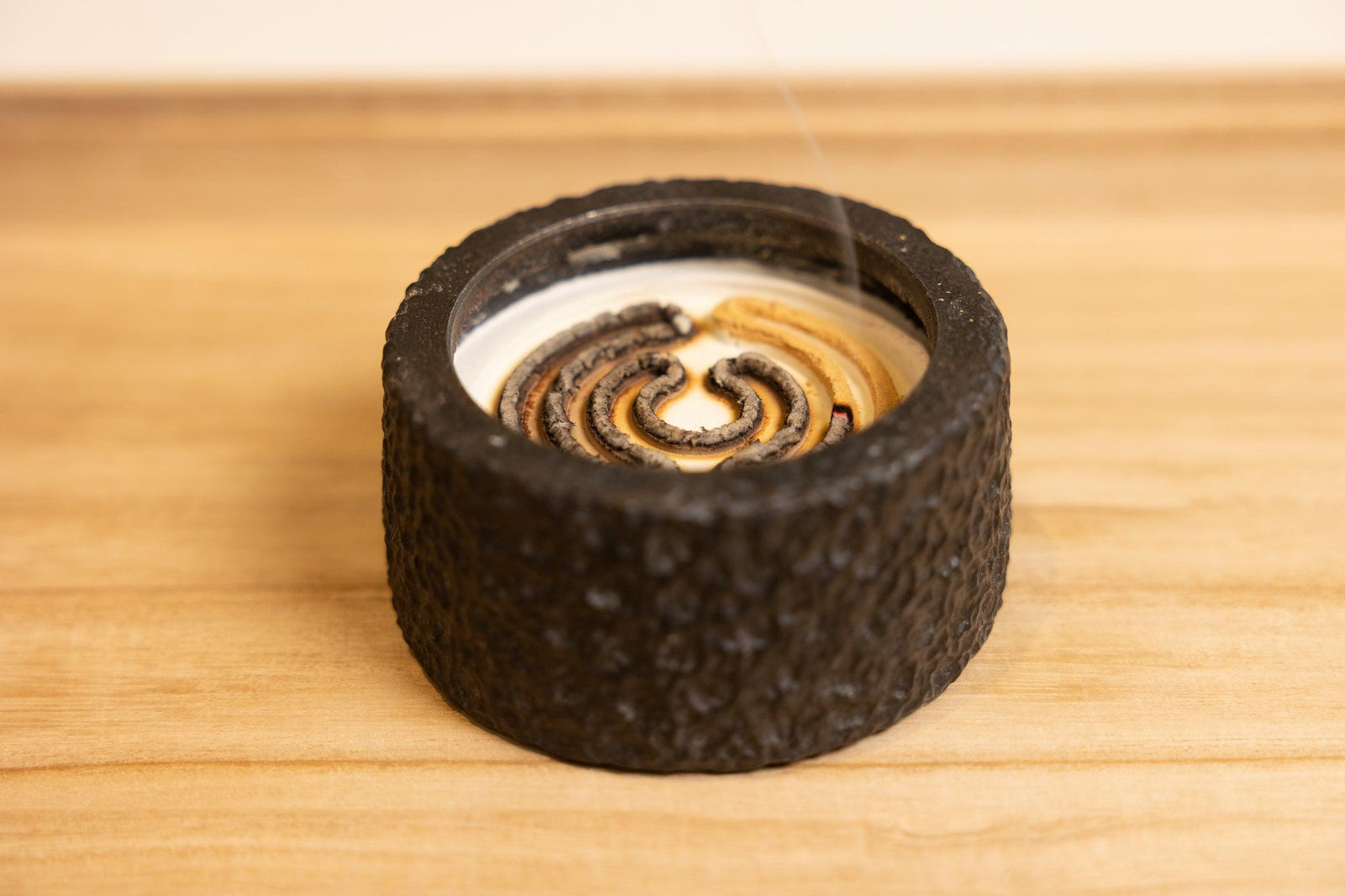Why do the Chinese burn incense? What is the purpose of traditional Chinese incense? These are common questions we come across when we share our story. Traditional Chinese incense use actually has thousands of years of history, so while we will try to answer some parts of this question here, we can only cover a small portion of it – the use of incense in Ancient China, up until about the 3rd century. For the use of incense leading up to and the early Middle Ages China (3rd to 10th centuries), please refer to this article.
Neolithic Chinese Incense and Oracle Bone Script
The burning of plant materials for ceremonial and worshipping purposes are known to exist from the Neolithic period in China. Archaeological sites such as Shanghai’s Songze Relic Site (淞泽) have uncovered evidence of burning in its ceremonial alters, dating back approximately 6000 years.
The character 祡 (pronounced chai) also existed in oracle bone script, a pictorial form of writing widely used in the Shang Dyansty, around 1600-1050 BCE. This character is rarely used today, but its meaning is obvious from its form. You can see it below, literally showing hands putting branches to top of the fire for burning. It is believed that the burning was for the purpose of worshipping the sky (祭天), where deities reside.

Zhou Dynasty and the development of Chinese Incense Burning Rituals
By the Zhou dynasty (周朝, approx. 1050-250 BCE), a fairly elaborate ceremony for the worshipping of the skies had evolved. These ceremonies became so important and ingrained in Chinese culture that they were performed annually by the Emperor at the Imperial altar, a practice that continued for the next 2000 years until the last Emperor was removed.
Burning of fragrant plant materials was an important part of the ceremony, as the smoke is believed to carry the pleasing smell upward into the skies, where the deities could smell the offerings and enjoy them. This process was given a special character in the Zhou: 禋 (pronounced yin).
We know of Yin as it is mentioned in classical Chinese texts. The first poetry collection of China Classic of Poetry《诗经》 (11th-7th centuries BCE) contains a poem《大雅·生民》about the Zhou dynasty King Hou Ji (后稷). It mentions the practice of yin, and the burning of Chinese mugwort as part of the process. The renowned Han dynasty writer Zheng Guan (郑玄) also offers the following explanatory note to some writing in the classic Book of Documents《尚书》(5th/6th century BCE): “yin, a ceremony of fragrance” (“禋,芬芳之祭也”).
Because of the association of burning fragrant plants for the heavens – the earliest form of Chinese incense – fragrance attained a revered position in Zhou society.
One of the greatest poem in Chinese (or possibly in the world) is the Zhou poem The Lament《离骚》by Qu Yuan (屈原), and it truly epitomises how intellectuals and aristocrats of the day regarded fragrance. The poet writes from the position of an honest and righteous minister, whose advice falls on his King’s deaf ears because he is manipulated by other corrupt and selfish advisors. The protagonist’s purity is symbolised by a series of references to flowers and scents: he wears fragrant comfrey on his shoulders, and strands of orchid on his clothing; he has acres of fragrant shrubs and orchids planted on his land; he drinks the dew of magnolias in the mornings, and eats the fallen petals of chrysanthemums in the evenings. While the fragrant flowers and plants all around him lose their scent or become common weeds, his own orchid strands retain their rich aroma – an allegory for the decline of the state that he sees all around him, while he retains his purity and honor. The imagery is rich and the emotions powerfully touching.
There is also writing that records Qi Heng Gong (齐桓公), a King of the Zhou era, preparing to meet his respected advisor and minister Guan Zhong (管仲) by bathing three times and then smearing his body with aromatics plants three times (《国语 齐语》:“管仲至,三釁三浴之”).
From Qin to Han, the Silk Road and its impact on Chinese incense use
The Qin dynasty (秦朝, pronounced chin) was a short-lived but defining dynasty following the Zhou. Qin Shi Huang (秦始皇) achieved what no others had managed before him – he united various disparate warring states of the Zhou into one empire, governed by a central government. He was the first official emperor of China, and although the dynasty only formally lasted for about 15 years – from 221 BCE to 206 BCE – its influence on Chinese history was profound. In fact, it is widely speculated that the world “China” itself is derived from the pronunciation of the word 秦.
Qin paved the way for a long and stable Han dynasty which lasted about 400 years, (汉朝,206BCE – 220CE). If the English name China is an indication of the importance of Qin dynasty, the Chinese name for the major ethnic Chinese group Han is an indication of the importance of Han dynasty.
With increased wealth levels from steady economic growth, land conquests to the south and west, and increased trade with establishment of the silk road, the types of incense available in China increased dramatically, as did their use. Where incense tended to be mostly plant leaves or flowers in the Zhou, by the Han other forms such as resins had become staples because of their longer lasting fragrance.
Incense continued to be used for worshipping and ceremonial purposes, but also became an indispensable part of palace life, and integrated into Traditional Chinese Medicine. For example, in Ceremonies of Han Officials《汉官仪》, there are clear records that part of the duty of wait-ladies in the palace is to hold incense burners for scenting clothing(《汉官仪》:“女待史絜被服,执香炉烧熏,从入台中,给使护衣服也”).
Archaeological digs of Han tombs have unearthed large quantities of incense and incense accessories, and these give us a hint of the multitude of ways that incense was used. Incense buried with the dead was not just a sign of status, but also of spiritual value, and their antiseptic properties slowed down corpse decay.
In the renowned Han Dynasty site Mawangdui in Changsha (马王堆), along with incense burners and copious amounts of fragrant plants, incense pouches and a scented pillow have also been unearthed. The scented pillow stuffed with Herb of Fortune Eupatorium (佩兰叶 ) is thought to be a “health-enhancing” pillow, used not only for its fragrance, but also its antiseptic and illness-prevention properties.

Photo credit: Mawangdui Han Dynasty Tombs exhibition
Multiple bronze incense holders, and even a small sample of frankincense were found in the tomb of the Han dynasty Nanyue King (南越王), whose kingdom encompassed coastal parts of current day southern China as well as northern and middle parts of Vietnam.


Photo credit: Museum of the Western Han Dynasty Mausoleum of the Nanyue King
In fact, the demand for incense was such that the canonical text Readings of the Taiping Era(《太平御览》引《林邑记》) records that in the Han dynasty, groups of people in the current day Vietnam region were collecting incense as their main occupation.
The Han period also saw developments in Taoism and Buddhism. The first organized form of Taoism emerged in the 2nd century, and traditional texts teach that deities are nourished not by the common food of humans, but by the scent of incense alone. Buddhism was introduced to China at around the 1st century. Both religions invoke incense use heavily in their ceremonies, so their proliferation further increased the use and status of incense.
All in all, we can see that by the 3rd century CE, or approximately 2000 years ago, incense use had taken a strong foothold in Chinese society. As China developed economically and culturally over the next 1500 years, many more exciting developments were set to occur.






Leave a comment (all fields required)